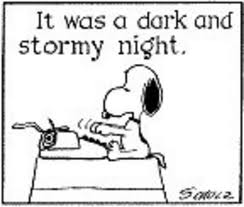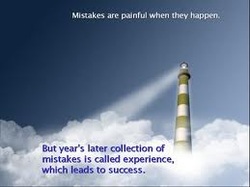DearParents and Students,
Today it is with great honor that I present to you the Dr. Michael L. Kendrick Christian Academy “where all students can learn!” It has been a tremendous journey for us here at K.C.A. and our faculty and staff couldn’t be more excited about the learning that is going to take place this school year. According to Scheuermann and Hall (2008) school experiences shape a child’s life beyond academic preparation; the quality of a child’s school experience is an important predictor of success later in life; and children and youth who successfully manage the academic and social challenges of school typically have more positive post-school experiences than children who struggle academically or socially. While I have you here, I want to go over our schools vision and mission statement, and then talk about some of our special education initiatives for the 2012-2013 school term.
Our School Vision: (1.) A "Bias Free Classroom" where teachers not only believe in each student, but instruct each student with the same rigor and passion regardless of the students instructional level, color, race, gender, or class.
(2.) A Bias Free Public/Private School System where teachers are trained, supported, rewarded, and held accountable for education gains inside their classrooms without outside bias from administration, district officials, or government agencies.
(3.) A "Free Collegiate Education America" where any student, regardless of color, race, gender, or class, can go to college without financial hardship or obligation to "pay" back the government.
Our School Mission: To create life-long learners inside my classroom by driving passion into each student with innovative and exciting instruction that challenges students in a way that makes learning not only fun, but adhesive. Also, to conduct research supporting putting students first, and possibly one day persuading government officials to create funding programs that pay for all of students' higher education costs-like many other countries around the world. Here at K.C.A., we pride ourselves on being a place where all students can learn, regardless of race, class, gender, or disability, and our state of the art campus offers a variety of programs to ensure the learning gains of all students. With that said, I will be going into detail about some of our program’s highlights.
We are serving pre-school through grade 5 According to Reynolds, Magnuson, & Ou (2010) there is increasing empirical evidence suggesting that programs which successfully address children's learning needs must be comprehensive, span multiple years, and target key transition points. Using schools as the single delivery system for early and extended childhood interventions can strengthen the continuity of services to children and avoid the disjointedness between preschool and school-age programs (Reynolds, Magnuson & Ou, 2010, p.1126). This method of keeping students from early child care throughout grade five will strengthen the students academically and help to avoid any possible “disjointedness” between schools and programs. Students attending K.C.A. from preschool through grade five will have an advantage over students who only attend a year or two inconsistently. Therefore parents, we are priding ourselves on having one of the best possible education programs for your children so you’ll feel comfortable leaving your child with us for 5-7 years.
Language based school readiness programs Programs that focus on language-based school readiness skills appear to be more beneficial to children (Reynolds, Magnuson & Ou, 2010, p.1126). According to research, these types of programs lead to a greater student success rate. Here at K.C.A. we will be using language based school readiness skills, along with other research based programs, to ensure that every child is making learning gains.
Serving ELL, ESE, & Low Income Families According to Scarcella (2003) promoting the development of academic English for all learners and for ELL students in particular is a cause for concern because mastering academic English underpins students’ economic and social opportunities. Therefore, we pride ourselves serving these populations of students because our nation’s future depends on their success. We have to train our future leaders of tomorrow, and at K.C.A. we are committed to achieving learning gains in all of our students-no excuses!
Family Resource & Community Center It is crucial for programs to have an intensive family-support component which facilitates parental involvement and commitment to the child's education and promotes parents' personal growth (Reynolds, Magnuson & Ou, 2010, p.1126). At K.C.A. we offer extended learning opportunities for not only or students, but for the families of our students. We teach English language three times a week at our community center. K.C.A. partners with many businesses in the community to provide job fairs and career training for our parents. Furthermore, Kearney & Griffin (2001) points out that mothers of disabled children rate their children as having more temperamental characteristics related to self regulatory processes such as being more distractive, more demanding, and less adaptable: which are persistent over time and are most common between ages of six to twelve years old, as a result, K.C.A. Family Resource & Community center offers behavior medication classes to struggling parents of children with disabilities. Lastly, we have volunteer crisis counselors available to assist families in need, and we also have a food pantry where families can receive free can goods if needed. All these programs are in place to ensure the parents of our students are progressing in life just as much as their children.
15/1 Student-Teacher Ratio plus an aide for each class It is beneficial to add teacher aides and reduce class sizes or student–teacher ratios so that children can receive individualized attention and more individual learning opportunities (Reynolds, Magnuson & Ou, 2010, p.1126). Each classroom will have no more than 15 students per certified teacher. Also, each certified teacher will have either a bi-lingual or special needs aide to assist him or her during daily learning activities. At K.C.A. we never want a student to feel left out or unimportant, therefore we offer a continuous support system for our students where they can always have someone to help them if needed.
Full inclusion of ESE Students Program personnel ensure that children with disabilities are active participants in all classroom routines and activities (Hurley & Horn, 2010, p.333). Research suggests this is the best instructional delivery method to promote learning gains. All classrooms are mixed with students from different cultures and ability levels so students can learn from one another and feel comfortable with students who may be different. This is will help students grow into mature citizens and help them develop an appreciation and a sensitivity towards others of different cultures or abilities.
State of the art instruction from master teachers Generally speaking, students who are academically deficient experience significantly more negative interactions, more punitive consequences, less demanding academic tasks, and less instructional time with the teacher because of a greater frequency of disciplinary actions that remove these students from the classroom (Leone et al., 2003). Conversely, high achieving students typically experience greater behavioral and social success in school (Catalano, Loeber, & Mckinney, 1999). Therefore, it is vital for instructors to offer high quality instruction to their students to prevent them from entering the negative social cycle described above by Leone et al. (2003).Furthermore, According to Zetlin, Beltran, Saicido, Gonzalez & Reyes (2011) teacher preservice programs must include the training of special education teachers in strategies for effectively serving students with disabilities who are also English language learners. The preservice programs taught to our teachers ensures that each teacher develops the skills to determine the nature of students learning problems and to design learning environments that address the cultural, linguistic, and special education needs of students who are second language learners (Zetlin, Beltran, Saicido, Gonzalez & Reyes, 2011).
In addition to all the wonderful resources spoken about above, we have a state of the art computer lab where students have daily access, an free after school enrichment center where students can get help with their classwork from certified teachers, and we other after school leadership clubs for students to get involved in their school and community. Here at K.C.A., we are truly breaking ground on the next generation of American schools where “all students can learn” together. I want to take this time to say thank you all for attending this orientation meeting. K.C.A.’s success depends on you-the parents, as much as it does our students, so let’s work together this year to help our school become the model for how schools should be ran!
References:
Catalano, R., Loeber, R., Mckinney, K. (1999).
School and community interventions to prevent serious and violent offending. Juvenile Bulletin. Washington, DC: U.S. Department of Justice, Office of Juvenile Justice and Delinquency Prevention.
Hurley, J.J., Horn, E.M., (2010). Family and professional priorities for inclusive early childhood settings.
Journal of Early Intervention, 32(5), 335-350.
Kearney, P.M., Griffin, T. (2001). Between joy and sorrow: Being a parent of a child with developmental disability.
Journal of Advanced Nursing, 34(1), 582-592.
Leone, P.E., Christle, C.A., Nelson, C.M., Skiba, R., Frey, A., & Jolivette, K. (2003).
School failure, race, and disability: Promoting positive outcomes, decreasing vulnerability for involvement with the juvenile delinquency system. College Park, MD: The National Center on Education, Disability, and Juvenile Justice.
Reynolds, A.J., Magnuson, K.A., Ou, S. (2010). Preschool to third grade programs and practices: A review of research.
Children and Youth Service Review, 32, 1121-1131.
Scarcella, R. ( 2003).
Academic English: A conceptual framework . University of California Linguistic Minority Research Institute Technical Report, 1. Retrieved from
http://lmri.ucsb.edu/publications/03_scarcella.pdf.
Slama, R.B. (2012). A longitudinal analysis of academic English proficiency outcomes for adolescent English language learners in the united states.
Journal of Educational Psychology, 104(2).
Scheuermann, B.K., & Hall, J.A. (2008). Positive behavioral supports for the classroom. Upper Saddle River, NJ: Pearson Education, Inc.
Zetlin, A., Beltran, D., Saicido, P., Gonzalez, T., Reyes, T. (2011). Building a pathway of optimal support for English language learners in special education.
Teacher Education and Special Education, 34(1), 59-70.






 RSS Feed
RSS Feed